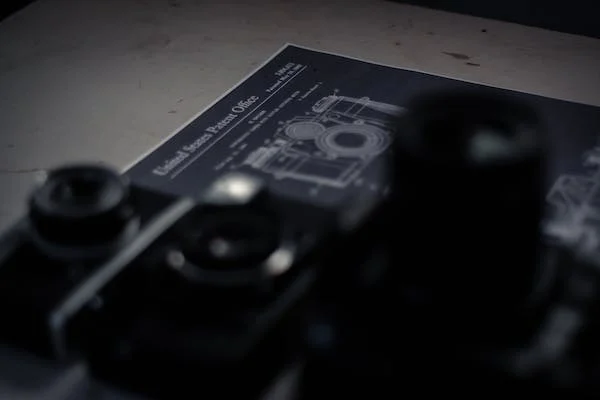Lights, camera, action! Have you ever wondered what goes into making your favorite movies and TV shows? From the stunning visuals to the captivating storylines, there’s a lot that goes on behind the scenes of film production. In this blog post, we’ll take a deep dive into the art and craft of film production – from pre-production planning all the way through post-production editing. Join us as we explore how these talented professionals bring our favorite stories to life on screen. Grab some popcorn and settle in for an exciting journey through the world of film production!
Introduction to Film Production
A film production refers to the process of making a movie. It involves all the steps from ideation and scriptwriting to shooting, editing, and finally releasing the film. The art and craft of filmmaking is both fascinating and complex.
The first step in any film production is developing an idea or story that can be translated into a screenplay. Once the script is written, the next step is to secure funding for the project. Once funding is in place, the pre-production process can begin. This includes hiring a cast and crew, finding locations, and creating a shooting schedule.
Production is the phase where the actual filming takes place. This can be a challenging and chaotic process, but also one of great creativity and collaboration. After filming wraps, post-production begins. This is when the footage is edited together into a finished product. The film is released to audiences through distribution channels such as theatres, streaming services, or television networks.
The process of making a film is both intricate and collaborative. It takes a team of dedicated professionals to bring a story from concept to screen. And while it can be challenging at times, it’s also an immensely rewarding experience.
Pre-Production: Developing the Story
Pre-production is all about developing the story. The first step is to come up with a great idea. Once you have an idea, you need to develop it into a script. Then you need to find the right people to help bring your vision to life.
You might think that the hard part is over once you have a script, but there’s still a lot of work to do. The next step is to figure out how you’re going to shoot the film. This involves choosing locations, designing sets, and figuring out logistics like transportation and accommodations.
Once all of that is sorted out, you can finally start shooting your film! But even then, there’s still a lot of work to do. You’ll need to keep track of takes, make sure everyone is hitting their marks, and stay on schedule.
All of this work is worth it when you finally see your film come together and get released into the world. It’s a truly rewarding experience.
Casting and Rehearsals
Casting and rehearsals are two of the most important aspects of film production. Without a good cast and a well-rehearsed script, even the best films can fall flat.
Good casting is all about finding the right people for the right roles. This means more than just finding actors with the right looks or who are good at acting. It also means finding people who will be able to work well together and who will understand the characters they are playing.
Rehearsals are just as important as casting. A well-rehearsed film will have better pacing and flow than one that has not been rehearsed. Rehearsals also allow the director to work out any kinks in the script and to make sure that all of the actors are on the same page.
Both casting and rehearsals are essential to making a great film. Without them, even the best ideas can fall flat.
Film Production: Filming on Location or a Studio Set
Whether you’re filming on location or in a studio set, there are a few things to keep in mind to ensure a successful shoot. First, make sure you have the proper permits and permissions in place. Next, take into account the logistics of your shoot, such as power and internet access, and plan accordingly. Be prepared for anything by bringing essential supplies like batteries, chargers, and first aid kits. With these tips in mind, you’ll be ready to tackle any film production project.
Film Production; Editing and Post-Production
In film production, post-production is the term used to describe the period after the filming process has wrapped up and the footage has been collected. During this time, the footage is edited down into a finished product that tells a cohesive story. This can be a lengthy and painstaking process, but it’s also where a lot of the magic happens.
After the raw footage has been collected, it’s time for the editor to sit down and start putting together a rough cut. This is where they will take all of the different scenes and start piecing them together in a way that makes sense. The editor will also add in any necessary graphics or special effects at this stage.
Once the rough cut is complete, it’s time for the director and producer to take a look and give their feedback. Based on their notes, the editor will make any necessary changes and tweaks. This back-and-forth process continues until everyone is happy with the final product.
Once all of the edits are complete, the film is ready to be released to audiences!
Visual Effects and Animation
The art and craft of film production is not just about the story or the acting. It’s also about the technical aspects, including the visual effects and animation.
Most people think of visual effects as computer-generated images (CGI), but that’s just one type of effect. There are also practical effects, like explosions or pyrotechnics, and optical effects, like matte paintings or split screens.
Animation is its own category of visual effect. This can include traditional hand-drawn animation, stop-motion animation, or computer-generated animation.
Whether it’s a huge blockbuster movie or a small independent film, each one takes advantage of visual effects and animation to tell its story in the most visually appealing way possible.
Music and Sound Design
The sound design of a film is critical to the overall experience of the viewer. The soundscape can be used to create tension, atmosphere and emotion, and can be an important storytelling tool. A good sound designer will work closely with the director and other members of the production team to create a unique sound for each film.
There are many different elements to consider when designing the sound for a film. The first step is to understand the story and the tone that the director is trying to achieve. Once this has been established, the sound designer can begin to create a palette of sounds that will be used throughout the film. This may include Foley effects, dialogue, music and ambience.
The next step is to capture these sounds in the studio or on location. This process is known as field recording, and it involves using high-quality microphones to capture audio from various sources. Once all of the recordings have been made, they are then edited and mixed together to create the final soundtrack.
The sound design of a film can have a huge impact on how it is received by audiences. By working closely with the director and other members of the production team, a sound designer can help create a truly immersive experience that will stay with viewers long after they leave the cinema.
Marketing & Distribution of the Film
The film’s marketing and distribution are critical to its success. The film’s producer must select the right distributor for the film and work with them to create a marketing and distribution plan that will reach the film’s target audience. They must also ensure that the film is properly promoted and that it receives a good release date.
Conclusion
From screenplays to sets, casting to cinematography, and editing to distribution, film production is a complex process comprised of many different components. While the craft of filmmaking can be daunting for those who are just starting out, it is ultimately very rewarding when you see all your hard work come together in the form of a completed movie. Understanding the various processes involved in producing films will not only help you further appreciate what goes into making movies but also give you an insight on how they are made so that you can create your own great works.










